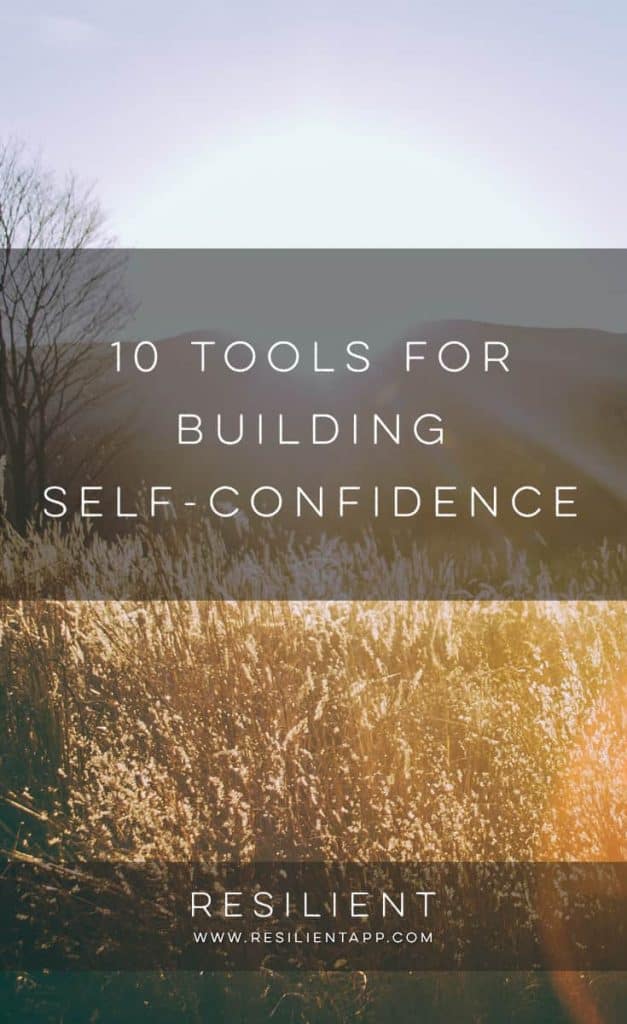10 Tools for Building Self-Confidence
We’ve all had our confidence level tested. How many of us feel completely comfortable entering a room of people we’ve never met? How about public speaking, would you be the one to jump at the chance to make a presentation or say a speech? Have you ever been put in a new situation that you’re unfamiliar with and then start to question your abilities?
This post was written by a guest author.

10 Tools for Building Self-Confidence
We all lack confidence once in awhile, and some of us do better at restoring it than others. Living in a constant state of low confidence can keep us stuck and feeling like a victim. It can rob us of joy that could be had if we were bold enough to take risks. It might even stand in the way of a promotion, business deals, or that dream date.
Address the Root Causes of Low Confidence
Unfortunately, lacking confidence can be a large obstacle in life, so what can we do about it?
To start with we can look at the root causes of our low confidence. One culprit is fear.
Some things we fear are:
▪ looking stupid
▪ being put down
▪ being judged
▪ making a mistake or failing
▪ being rejected
▪ being injured or physically hurt.
Fear produces other trouble-makers:
▪ Fear breeds laziness. Laziness talks us into not facing fear. It encourages us to take the easy way out, to settle for less.
▪ Fear breeds procrastination. It tells us to put things off until we feel more comfortable, until we get the courage up.
▪ Fear breeds de-motivation. It sometimes seems easier not to do something than to face our fears. Fear can stop us dead in our tracks.
▪ Fear breeds obstacles. It becomes easy to fabricate reasons why we can’t or shouldn’t proceed with something we are hesitant about. Fear gives us permission to drop our goals, or drop out, by creating a wall that we aren’t prepared to break through.
Lack of Confidence Can be Deep-Seated
There’s no doubt about it, an internal driver also works behind the scenes to erode our confidence. It is our own inner dialogue. We are good at reminding ourselves of what we aren’t good at. We are good at negative self-talk.
Maybe there were real past experiences that give us reason to fear. If our wounded inner child has never found healing, it may control us into our adult years, keeping us captive.
On top of our personal inner voices, there are the voices of parents, siblings, friends and even enemies shouting at us—either in current-day voices, or in voices of days gone by. These voices echo put-downs, regret, shame and embarrassing moments.
Another background force undermining our confidence is media and society. We are brainwashed to believe half-truths, things like, if we don’t do this or that, don’t own this or that, or don’t look this way or that way, that we are a lesser person. Faulty perspectives trap us in a hamster wheel of endless striving and self-criticism, unless we are wise enough to see through them.
Confidence Building Tools
So how do we get rid of these fears, blockages, and faulty messages?
Being our own advocate, we can implement some practical tools, practice them, affirm ourselves, celebrate successes, and practice some more. A confidence building tool is a principle specifically directed at addressing the attacks on our confidence. These tools can be called upon at a moment’s notice, and implemented as a means of bolstering confidence. This list is by no means exhaustive, but is a good start:
Tool 1: Quiet the confidence-sapper’s voice as soon as we recognize it. Just tell it to go away and choose not to believe it. Let the past be the past.
Tool 2: Implement positive self-talk to replace the confidence-sapper’s themes.
Tool 3: Ask what it is we fear. Challenge the truth of the fear. Ask what the likelihood is the fear would be realized.
Tool 4: Evaluate the cost of giving in to fear. Will we lose a once-in-a-lifetime opportunity? Will we lose meeting the love of our life? Will we lose a raise in pay?
Tool 5: Notice when we are comparing ourselves to others and stop the habit.
Tool 6: Don’t let other’s opinions have so much influence on us. Change the habit of wondering what other people think.
Tool 7: Risk believing that things will turn out positively and move forward.
Tool 8: Resolve that we will pull ourselves back up if things don’t go as planned.
Tool 9: Learn to laugh at ourselves and not worry so much.
Tool 10: Celebrate successes. Record them in a book or acknowledge them some way. Successes reinforce our confidence. They help us to believe in ourselves.
We can do it!
These are but a few tools we can put in our satchel to defeat self-sabotage and develop confidence. It takes awareness, tools, practice and a choice to push through our fears in order to move forward.
There will always be challenges, tests, hurt feelings, let downs and situations that don’t go our way. No one has a perfect life, but we all have fortitude within ourselves to change.
